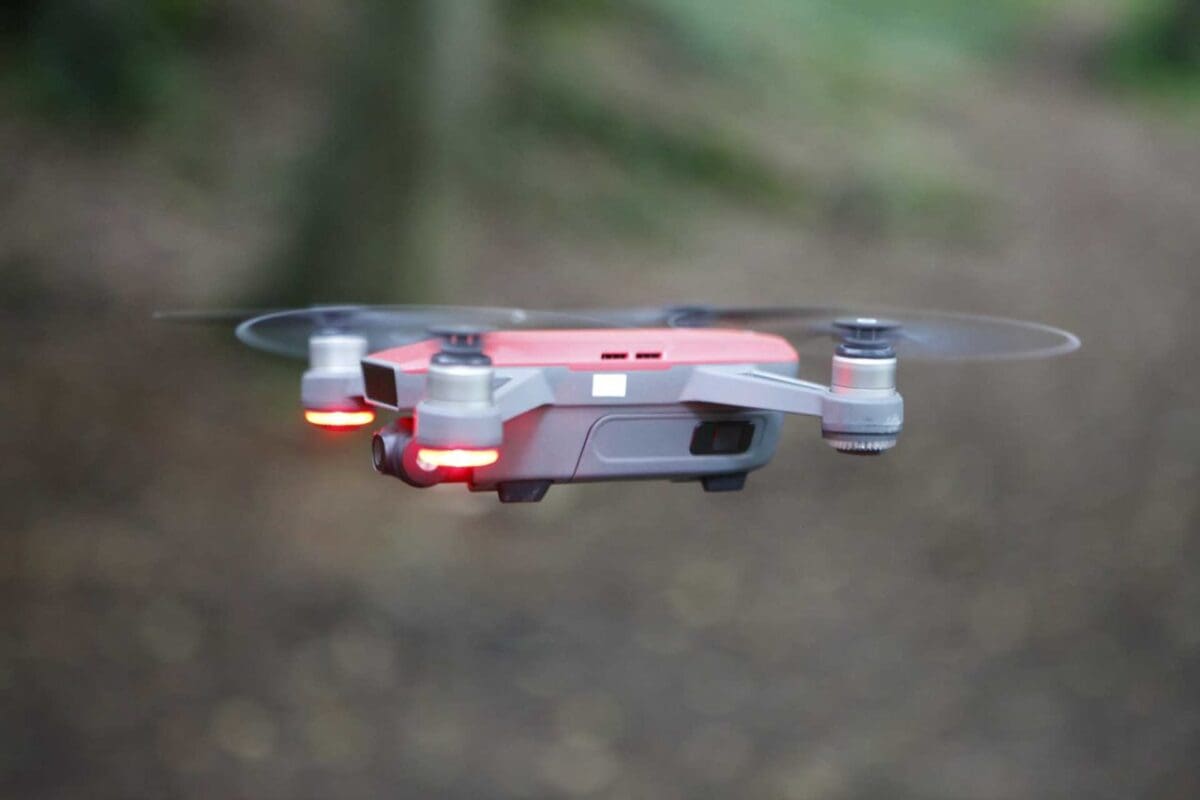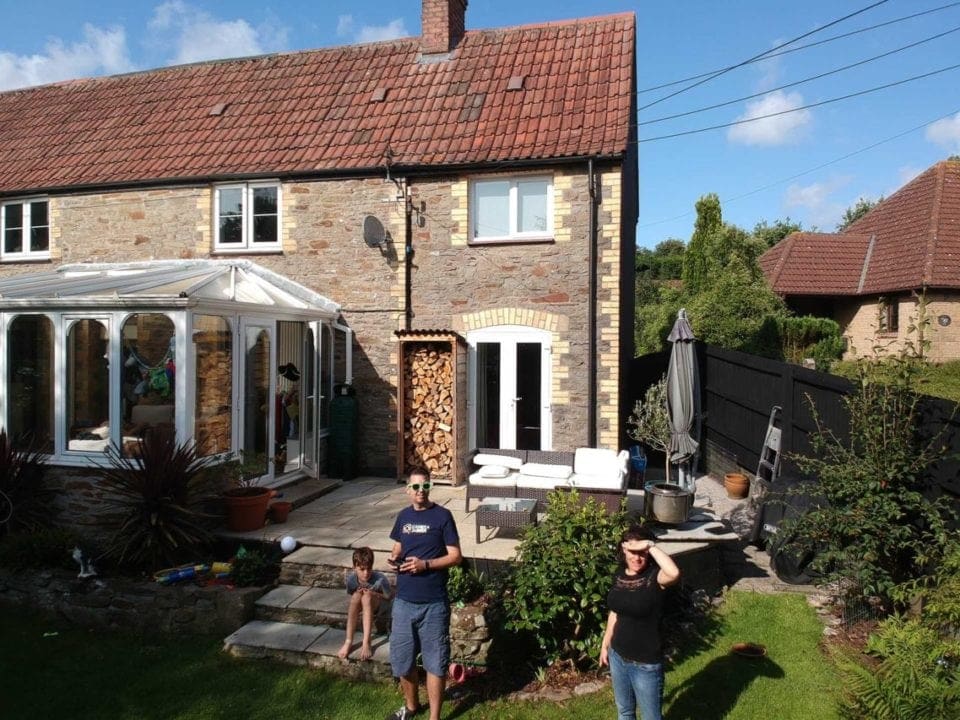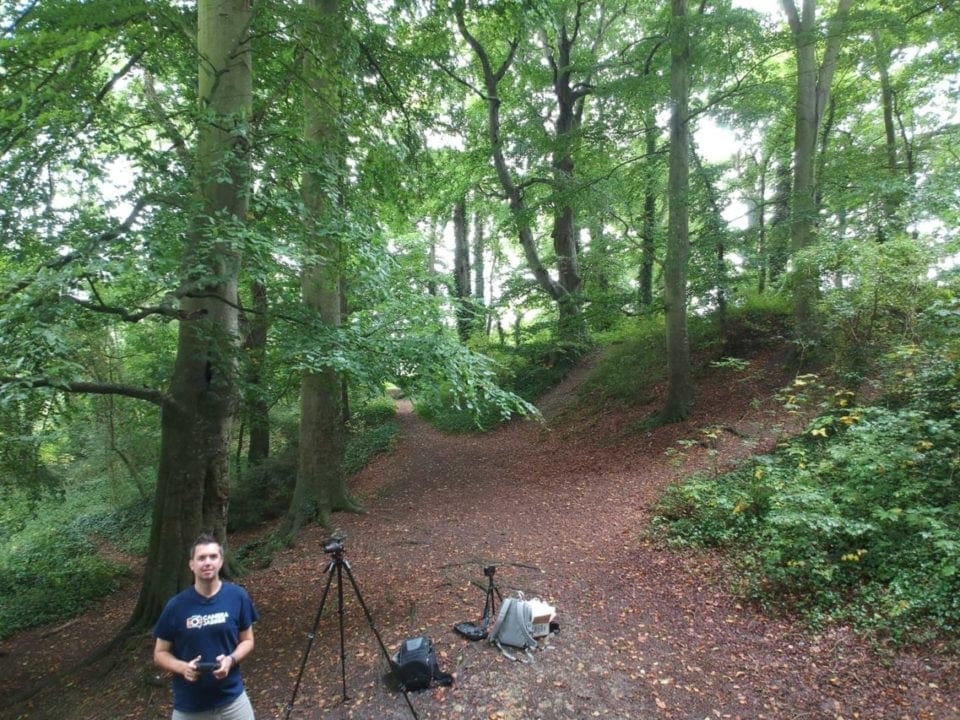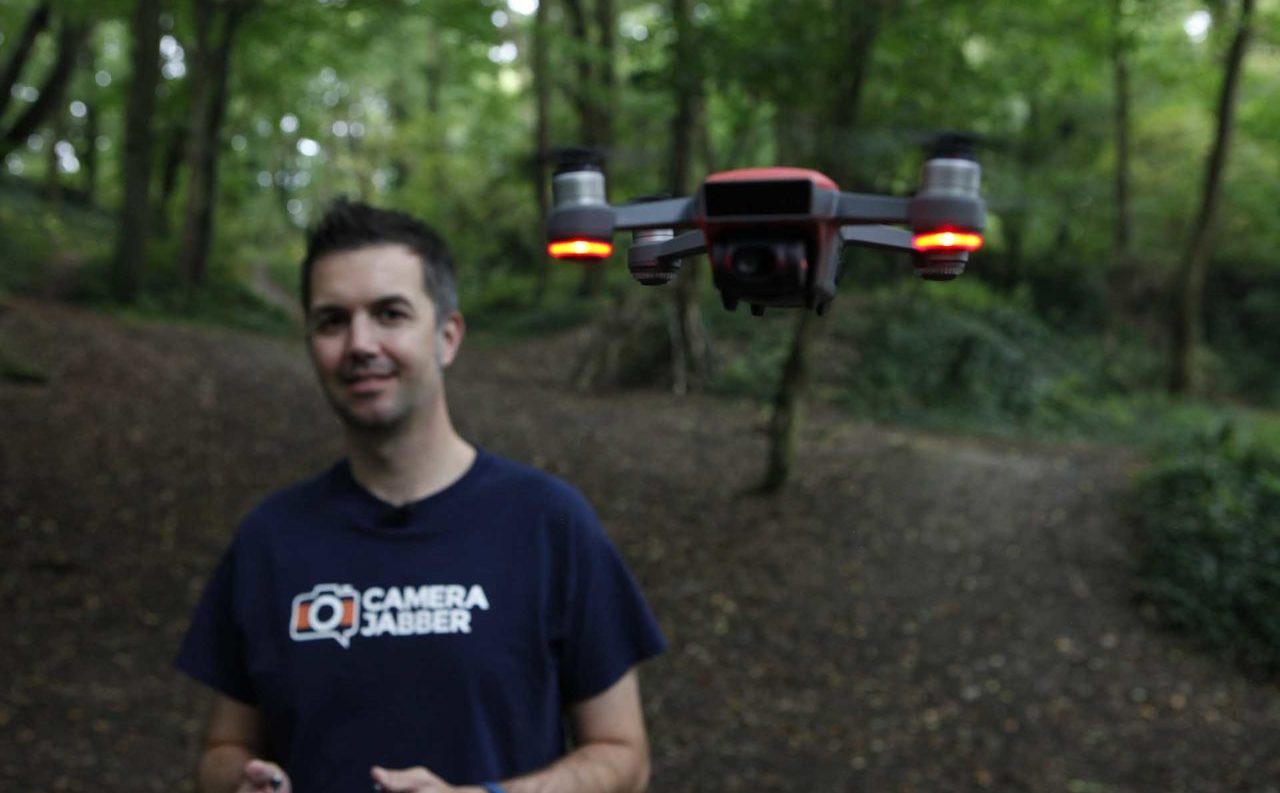DJI Spark Review: Snap Verdict
We had a lot of fun writing this DJI Spark review. DJI’s entry-level Spark is a simple-to-use drone that opens up the world of unmanned aircraft to a whole new audience. Its body design is streamlined and robust, and even someone who isn’t technically or mechanically minded will have a blast. The camera produces well-exposed images and stable video. If only you could fly it for longer than 16 minutes on one charge.
For
- Easy to use
- Rugged
- Good image and video quality
Against
- Short flight time
- Smudgy detail in low light
- Gestures not always recognised
What is the DJI Spark?
- Drone for beginners
- Full HD video
- Control it via hand movements
- Automatic obstacle avoidance
The Spark is a drone announced by DJI on 24 May 2017 and is the Chinese manufacturer’s first true entry-level aircraft. It’s aimed at people who have never flown a drone before and packs a number of enticing features to, as DJI says, ‘remove the barriers between you and your camera in the sky’.
Chief among these is a Gesture Mode that allows you to control the Spark using a series of simple hand and arm movements, as well as take a selfie. You can also control the Spark using its remote control handset, or via the DJI Go 4 app on your smartphone (available for iOS and Android).
When flying Spark with the remote controller accessory, you can capture 720p real-time video transmission from up to 1.2 miles away. (In the UK you must always keep the drone in sight, full details of the drone rules can be seen at dronesafe.uk/drone-code)
The Spark also employs a 3D Sensing System that can detect obstacles in its path from up to 16ft away and prevent you from accidentally flying it into walls and trees and people.
The Spark achieves this using DJI’s FlightAutonomy system, which along with the forward-facing 3D Sensing System also comprises the main camera, a downward-facing vision system, dual-band GPS and GLONASS, a high-precision inertial measurement unit, and 24 computing cores. These are what enable the Spark to hover and sense obstacles with accuracy.
Other features include a QuickShot Intelligent Flight Mode during which the DJI Spark will fly along a preset flight path while recording a short video, tracking a subject along the way.
Four QuickShot options are available: Rocket, which sends Spark straight up into the air with the camera pointed down; Dronie, which sends Spark up and away from your subject; Circle, which rotates Spark around the subject; and Helix, which sends Spark spiraling away from a subject as it flies upward.
For each QuickShot, Spark will automatically create a 10sec video from your flight which you can share on social media.
DJI’s Spark also inherits some of the company’s previous Intelligent Flight Modes such as TapFly and ActiveTrack. A new TapFly sub mode called Coordinate enables Spark to fly to a location you tap on your mobile screen. TapFly’s Direction Mode lets you keep flying in the direction you tap on the screen.
With ActiveTrack mode, the DJI Spark will automatically recognise and track an object of your choosing, then maintain it in the centre of the frame. Also, DJI says that Spark’s 3D Sensing System will actively sense obstacles in front of the aircraft.
Like recent DJI drones, Spark can also return to its home point automatically if it has a sufficient GPS signal. While using the optional remote controller, if the battery gets too low, connection is lost or if you press the Return to Home (RTH) button, Spark will fly back to the preset home point while sensing obstacles in its path.
Size-wise, the DJI Spark weighs 300g and is powered by a LiPo battery that gives a flight time of up to 16 minutes.
- DJI Spark firmware update adds new video, photo features
- DJI Spark can now capture spherical panoramic images
- DJI Spark firmware update adds new flight features as first shipments go out

DJI Spark Build Quality
Taking the drone out of its case at the start of this DJI Spark review I was initially a little worried. The body itself feels strong and durable… but those propellers. I was so afraid I would crash the Spark and bust those propellers, then have to send it back to the good folks at DJI and explain my actions.
It must be a common occurrence, because DJI provided an extra set of propellers for this test. And I did crash the Spark. A number of times. Mainly in Sport mode. I also flew it too high, too fast into a canopy of trees and did a bit of pruning.
I’m pleased to say the propellers – and Spark itself – survived intact with nary a scratch. At one point I knocked one of the lower LED lamps off and thought I’d really done it this time. But the LED simply slots back in.
The Spark’s build keeps in line with its ethos of beginner friendliness. DJI knows you’re going to push it too far, and the Spark can take it.
The body itself is made of a thick, textured plastic, which can not only take a few knocks but the odd splash as well (as I discovered in a surprise rain shower).
On the nose is a hidden compartment under the name plate, and here you’ll find a microSD card slot and a micro USB charging port.
Underneath the Spark, the battery nests into the base. You can also remove the battery and charge it via DJI’s optional charging hub (available in the Combo pack, along with an extra battery and the handset), which accelerates the charging time.
On the whole, the Spark is built to last and take a few bumps. So don’t be afraid to use it!
DJI Spark Camera
- 1/2.3in CMOS sensor
- 12MP stills
- Full HD video
The DJI Spark’s camera uses a 1/2.3in CMOS sensor that captures still images in 12-megapixel resolution and can record stabilised video in Full HD 1080p. The Spark is designed with an incorporated 2-axis mechanical gimbal and UltraSmooth technology to help reduce shake and rolling shutter effect to keep this video footage stable.
Spark also inherits some of its siblings’ drone shooting modes, as well as new Pano and ShallowFocus modes. In Pano Mode, the Spark’s camera creates horizontal or vertical panoramas by automatically adjusting its gimbal and heading. It then captures a series of images and stitches them together.
In ShallowFocus mode, Spark will create the effect of shallow depth of field by rendering part of an image in sharp focus while the rest of the picture is soft.
The DJI GO 4 app also offers a number of filters and automatic editing templates, as well as instant sharing to Facebook, YouTube, Twitter, Instagram and other social media platforms.
If you splash out for the optional remote controller accessory, Spark pilots can use a new Sport Mode and fly Spark at up to 31 mph (50 kmh). Sport Mode sets the gimbal to first-person view (FPV) by default, so the camera moves with you as you fly. Spark will also be compatible with DJI Goggles for an immersive FPV flight experience, DJI says.
Sample Photos & Image Quality
- NOTE: under UK law, as an unlicensed drone pilot and publishing this on a site aims to make money from what we do, I am unable to share video captured with the drone in my DJI Spark review
We’ve been talking to the CAA, though, and it seems we can share a few illustrative images to give you a taste of the Spark’s image quality. Colours are rich and vibrant, and the Spark is at its best in good light like the image below.

Under mixed lighting, however, the Spark camera struggles a bit. Under this canopy of trees it was quite dark, despite the sunny day beyond. On our stills cameras we were shooting at about ISO 800, and when the light is low the Spark’s camera struggles a bit to capture fine detail.


The image above is a crop from the image above it at 100%, or actual pixels. As you can see, there’s quite a bit of smudging of detail. But then, this isn’t the Nikon D850. Nor is it even the GoPro Hero5 Black. The Spark has a camera, but you use it for different ends, and for the purposes of capturing views you wouldn’t normally be able to record and sharing them quickly, the Spark is quite a remarkable experience for someone who has never flown a drone before and is only used to photographing the world from eye level.
DJI Spark Stabilization
The Spark’s camera is stabilized by a 2-axis gimbal on the base of the drone. On the whole, the Spark’s gimbal provides excellent stabilization, and video footage is remarkably shake-free. For an entry-level drone, its video footage looks very professional.
In Sport mode where the Spark flies at faster speeds and has sharper movements, footage becomes a little less stable. But this is to be expected. And I certainly wasn’t disappointed.
The Spark’s gimbal provides a downward angle of 85 degrees, and in future versions of the Spark it would be nice to have a wider 90 degrees. A third axis would also be handy to add more stability in Sport mode, but this might be difficult to do given its size.
DJI Spark Gesture Mode
The Spark’s Gesture mode is the big headline-grabbing feature of the drone, and was one I was keen to test. In its Gesture mode you can control the Spark’s movement with simple hand gestures. And it’s very easy to set up.
When the Spark is powered on, simply place the drone in the palm of an outstretched arm and tap the battery button again, twice in succession. The propellers should then spring into action once it locates its satellites, and you can now remove your palm from beneath the Spark and it will hover.
You’ll then need to place a palm in front of the Spark’s camera, about 1 metre away for it to register your hand and activate Gesture mode. In the video below I show you how it’s done.
Gesture mode is a fun way to control the Spark, and it really appealed to my kids and others who are even more novice drone pilots than I am. Enabling the mode is very simple once you read the manual and learn DJI’s different methods of tapping buttons. And the hand controls are simple and intuitive.
Having not read the manual and just been placed in front of a hovering Spark, the gestures for moving it up and down and side to side are just what you would expect they would be.
That said, I didn’t find the Spark always registered my gestures. I think this is due to the imprecision of our own movements. From about 2 metres away, it picked up my gestures very well. But sometimes we stumble, inadvertently shift our weight, and if I drifted too close the Spark struggled to know what to do.
The Spark also struggled some of the time to recognise my beckon and tracking gestures.
These weren’t huge issues, though. They were often down to human error. But for a drone aimed at novices I thought it might be a little more flexible. I may have also been spoiled by the handset.
DJI supplied the option flight control handset for this review, which I show you how to set up and operate in a video further down in this review.
I found the handset to be my preferred method of flying the Spark, by far. Its simplicity and flexibility unlocked the full potential of the Spark and allowed me to – literally – take it to new heights.
Like the hand gestures, the flight controller’s operation is intuitive, and the knobs do exactly what you would guess they would do if you were approaching them blind.
With the Spark’s handset I found I could push the drone further. I could change its position or altitude more quickly and easily. I could shoot video or stills with the simple press of a button. I could flick a switch and put it into its Sport mode for more daredevil-style flying.
The handset is a nicely designed piece of kit, and at its £100-ish price tag, it’s a worthwhile expense that lets you get more from the Spark.
DJI Spark Flight Time
DJI says the Spark’s battery gives it a flight time of about 16 minutes, and I found this to be pretty accurate. The battery can handle most functions well. Only in Sport mode did it seem like it drained a bit faster than usual.
While 16 minutes doesn’t sound like very long – and it isn’t – I did find that the battery recharges reassuringly quickly. Now, I was using DJI’s battery charging hub, which was supplied to me for the test.
This charged the battery back to full in about 30 minutes. You can also charge the Spark via a USB port on its nose where the microSD card also sits. This will recharge the battery in about 1.5 to 2 hours.
DJI Spark Obstacle Avoidance
One of the other headline features of the DJI Spark is its 3D Sensing System that enables the drone to detect obstacles in its path and safely avoid hitting them.
As I explained in the introduction, the DJI Spark combines a whole lot of tech to help the drone recognise obstacles from up to 16 feet away and prevent you from flying it into them. But I must admit I was dubious.
I thought the Spark would probably be able to identify large, high-contrast objects in its path, but what about similarly coloured objects – or better yet, translucent ones?
The drone negotiated these very well in my tests for this DJI Spark review. Flying the drone at walls and trees, even myself, without fail it detected these objects and stopped itself when it reached about a metre away. I suspected it would. I was really curious to see how it would react to something like a chain link fence.
As you can see in the video below, flying the Spark toward the wire fencing around my chicken run, the Spark detected it and stopped itself. You can see the Spark jerk to a halt about a metre or two away from objects in its path.
I also got a bit more daring and flew the Spark towards a window. As in the video, I did this cautiously at a slow speed so that I could stop the Spark should the obstacle detection not kick in. Sure enough, it did. My best guess here is that the Spark’s 3D Sensing System picked up the drone’s own reflection and prevented a crash.
How easy is the DJI Spark to use?
The whole ethos of the Spark is its user friendliness, according to DJI, so I was very keen to evaluate that claim in my DJI Spark review, as I came into this test as a complete novice to drones. My colleague Ali here at Camera Jabber owns a couple Phantoms and a 3DR SOLO, but we all agreed I would be the best person to test the Spark given my inexperience.
I’m pleased to say the Spark is dead simple to use.
Now, I learned starting out that DJI has a few ways of doing common things like power buttons that are subtly different to other technology you may have used. For instance, you don’t just press a power button once to turn the Spark on or off. Tap once, then tap a second time and hold it for a couple seconds. Here’s a quick demo showing how it’s done.
Once you get your head round some of these things they quickly become second nature and you’re up in the air. I showed you in the video up above how to get the Spark airborne in its hand gesture mode, which takes about a minute.
In the video below I show you how to fly the Spark using the optional flight control handset. Again, there’s an order of doing things here. You must turn on the handset first and connect your phone to its WiFi before turning on the Spark.
But this is the most complex thing you’ll have to do.
You can also fly the Spark using the DJI Go 4 app. This is probably the more difficult way to fly the Spark solely because there are so many different options within the app. Once you spend some time having a nose around it will all seem familiar. As well as the usual flight controls you can also set flight logs, your location, change flight modes, turn your phone into a live view screen, adjust camera and video settings and more.
You can also use the app to edit your images and video, adding filters and even music, which you can then share to social media. You can also submit your work to DJI’s partner aerial imaging community, SkyPixel.
The DJI Go 4 app is one of the most comprehensive companion apps I’ve used and really enhances the experience.
DJI Spark Price
The DJI Spark price tag is officially £519 / $499 / €599 for the basic package. The Spark’s price rises to £699 / $699 / €799 for a Combo pack that includes an extra battery, the flight control handset, extra propellers and a shoulder bag.
Final Verdict
To some drones have sort of been like what flash photography is to others: a seemingly complex niche of photography that’s too daunting to try. But the Spark breaks down this wall. Its ruggedness and simplicity inspires confidence in novices like myself to place it in my palm and set it free. It opens up a whole new avenue for taking photos and video… and it’s a whole lot of fun.
Rather than think about its limitations, because I had so much fun testing this, I’d rather focus on what I’d like to see in the DJI Spark 2. On the camera side, a better low-light capability and 4K video recording would be nice. It would also be nice to either be able to fly the Spark for longer than 16 minutes or enable the battery to charge faster – or even include the fast charging hub in the cheaper bundle.
But the Spark succeeds in both forcing you to think about photos and video in different ways, and making you feel like a kid again.



